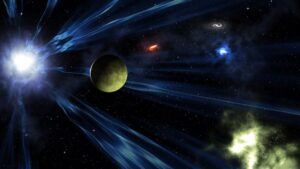MIT physicists have put forward a theory that the wobble in Mars’ orbit could be caused by primordial black holes, which may constitute dark matter. According to the research, these tiny black holes formed after the Big Bang and could be passing through our solar system, affecting the orbit of planets like Mars. David Kaiser, a professor of physics at MIT, suggests that the technology we have today could detect this slight shift in Mars’ orbit, which would be a significant breakthrough in understanding dark matter.
The Role of Primordial Black Holes
The study published in the journal Physical Review D suggests that dark matter could be made up of these primordial black holes, which are different from those formed from collapsed stars. These microscopic black holes may exert enough gravitational force to impact planetary orbits.
MIT’s team, including David Kaiser and Sarah Geller, used simulations to predict that these black holes pass through the solar system every decade or so. Their calculations show that even a black hole the size of an asteroid could influence Mars’ orbit.
Detecting the Wobble
Mars is an ideal candidate for this study because of its precise telemetry data. Instruments currently track its position with an accuracy of about 10 centimetres. A passing primordial black hole would cause Mars to deviate slightly from its regular orbit. Sarah Geller, a postdoctoral researcher at the University of California, Santa Cruz, told Phys.org that while Earth and the Moon might also be affected, the data for Mars is clearer, making it easier to detect any potential anomalies.
What This Could Mean for Dark Matter Research
If such a wobble is detected, it could confirm the presence of primordial black holes and offer new insights into dark matter. The research highlights the need for precise observations and collaboration with experts in solar system dynamics to explore this phenomenon further.


